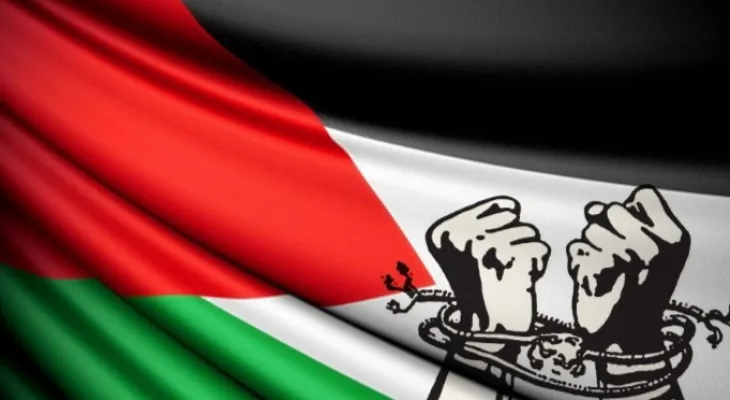Search here
Newspaper
Search here

Arab Canada News
News

Published: November 26, 2023
The prisoner exchange process between Palestine and the occupation began last Friday on the first day of the humanitarian truce announced by the Qatari Ministry of Foreign Affairs on November 22 of this month.
The exchange includes 50 Israeli prisoners who are women and children detained by the "Hamas" movement, in exchange for 150 Palestinian women and children detainees held by Israel as part of several deals made with the Palestinians.
This process joined previous prisoner exchanges that began since the late 1960s. So, what are the most notable prisoner exchange deals between Israel and the Palestinians throughout history?
July 1968: El Al plane
In July 1968, the "Popular Front for the Liberation of Palestine" hijacked an Israeli passenger plane belonging to the El Al company on flight number 426. There were about 100 passengers on board the Boeing 707 plane, including several Israelis, while it was on its way from Heathrow Airport in London to Leonardo da Vinci Airport in Rome, then to Lod Airport in Israel (currently Ben Gurion Airport).
The plane was hijacked in the air and its course was diverted to Algeria.
Later, the "Popular Front for the Liberation of Palestine" released the hostages, and Israel freed 37 Palestinian women with long sentences through the mediation of the International Red Cross.
August 1969: Leila Khaled
After the success of the first hijacking operation, the "Popular Front" repeated the same experience in August 1969, initially succeeding in hijacking an American passenger plane on flight number 840 headed from Los Angeles, USA, to Tel Aviv.
While the plane was flying over the Mediterranean Sea near Greece, the Palestinian Leila Khaled, a member of the "Popular Front," stormed the cockpit, took the pilot’s headset, and addressed the control tower saying: "This is the Popular Front flight... Free Arab Palestine," ordering the pilot to head to Palestine.
The "Popular Front" succeeded in releasing a number of detainees in Israeli prisons, including two Syrian pilots who were forced to make an emergency landing in Israel the previous year due to a navigational error.
January 1971: Mahmoud Hijazi
In 1969, the "Fatah" movement succeeded in kidnapping the Israeli soldier Shmuel Faiyz, and after negotiations lasting about two years, the movement reached an exchange deal with Israel which was executed in January 1971, in which Israel released the Palestinian Mahmoud Hijazi, and the "Fatah" movement released the Israeli soldier.
April 1978: The Seagull deal
In April 1978, the "Popular Front for the Liberation of Palestine – General Command" succeeded in capturing the Israeli soldier Abraham Amram in an operation they called "Operation Litani".
The "Palestine Liberation Organization," then led by Yasser Arafat, conducted negotiations with the Israeli side for an exchange operation, which ultimately led to the release of the deal named "The Seagull Deal" in January 1979, under which the "Popular Front – General Command" released the Israeli soldier and Israel freed 76 Palestinian prisoners.
February 1980: Mossad spy
About a year later, in February 1980, the Red Cross intervened to reach an exchange agreement between Israel and the "Fatah" movement, which was demanding the release of the Palestinian Mehdi Bseiso.
At that time, "Fatah" was detaining a Jordanian girl named Amina al-Mufti, whom they alleged was a spy for the Israeli "Mossad" agency. After intensive negotiations through the Red Cross, "Fatah" released the girl, and Israel released Bseiso.
November 1983: The major exchange operation (about 5000 prisoners)
"Fatah" succeeded in November 1983 in completing an exchange deal which was considered at the time a "great treasure," where Israel released 4700 Palestinians and Lebanese who were in the "Ansar" prison, built by Israel in southern Lebanon during the occupation there, as well as dozens released from other Israeli prisons. In return, "Fatah" released 6 Israeli soldiers who had been taken prisoner in September 1982.
May 1985: Operation Galilee
The "Popular Front" again succeeded in kidnapping three Israeli soldiers, considering at the time that they had "valuable prey." Negotiations were launched with the Israeli side to complete an exchange deal which was actually implemented in May 1985, during which Israel released 1155 Arab prisoners.
1997: Assassination attempt of Khaled Mashal
An operation was conducted between the Jordanian government and the Israeli government in which Tel Aviv released Hamas leader Sheikh Ahmed Yassin and two of his companions from Israeli prisons in exchange for releasing two Mossad men detained by Jordan who had failed to assassinate Mashal.
June 2006: The Shalit deal
The resistance succeeded in June 2006 in kidnapping the Israeli soldier Gilad Shalit at the Gaza Strip border.
Despite the war that Israel launched on the Gaza Strip at the time, it was unable to reach Shalit's place of detention and was forced to enter exchange negotiations with "Hamas" that lasted five years.
In the end, the movement released Shalit in exchange for 1027 Palestinian prisoners, and "Hamas" named the deal "Loyalty of the Free".
Comments